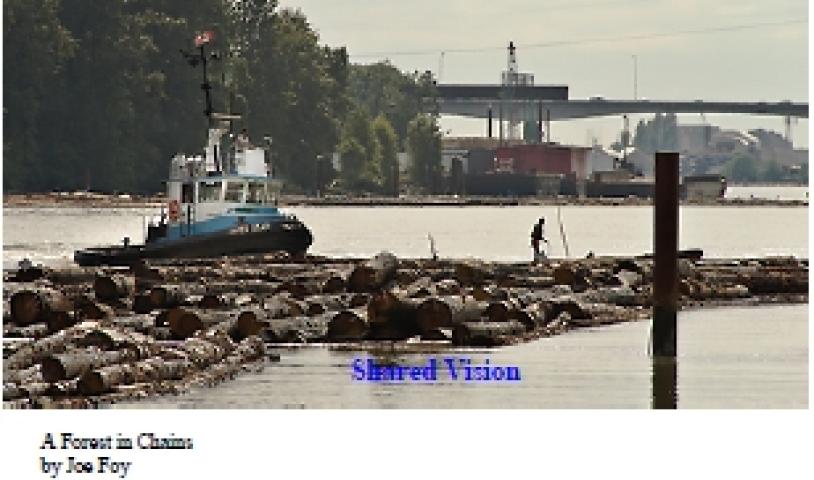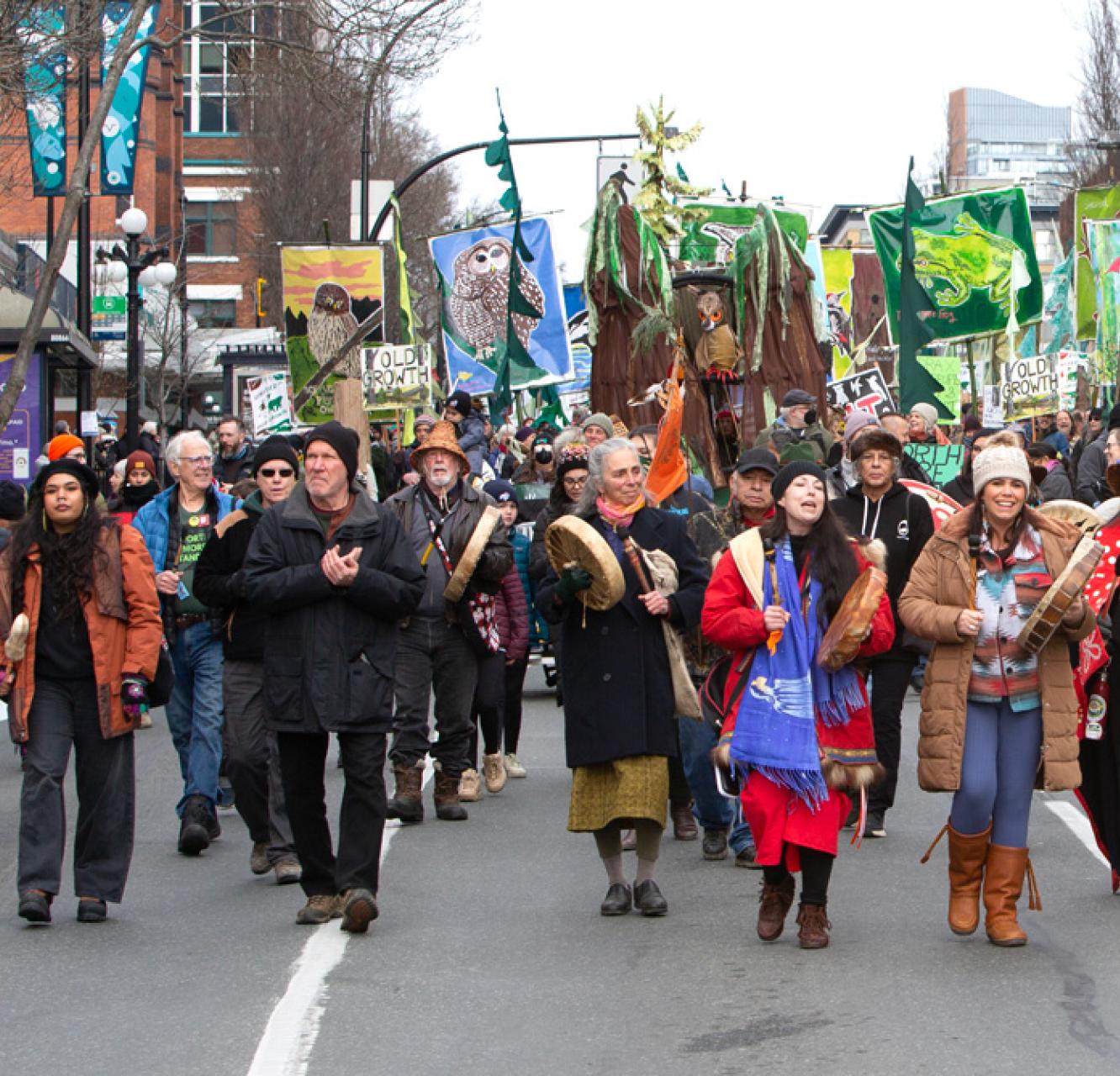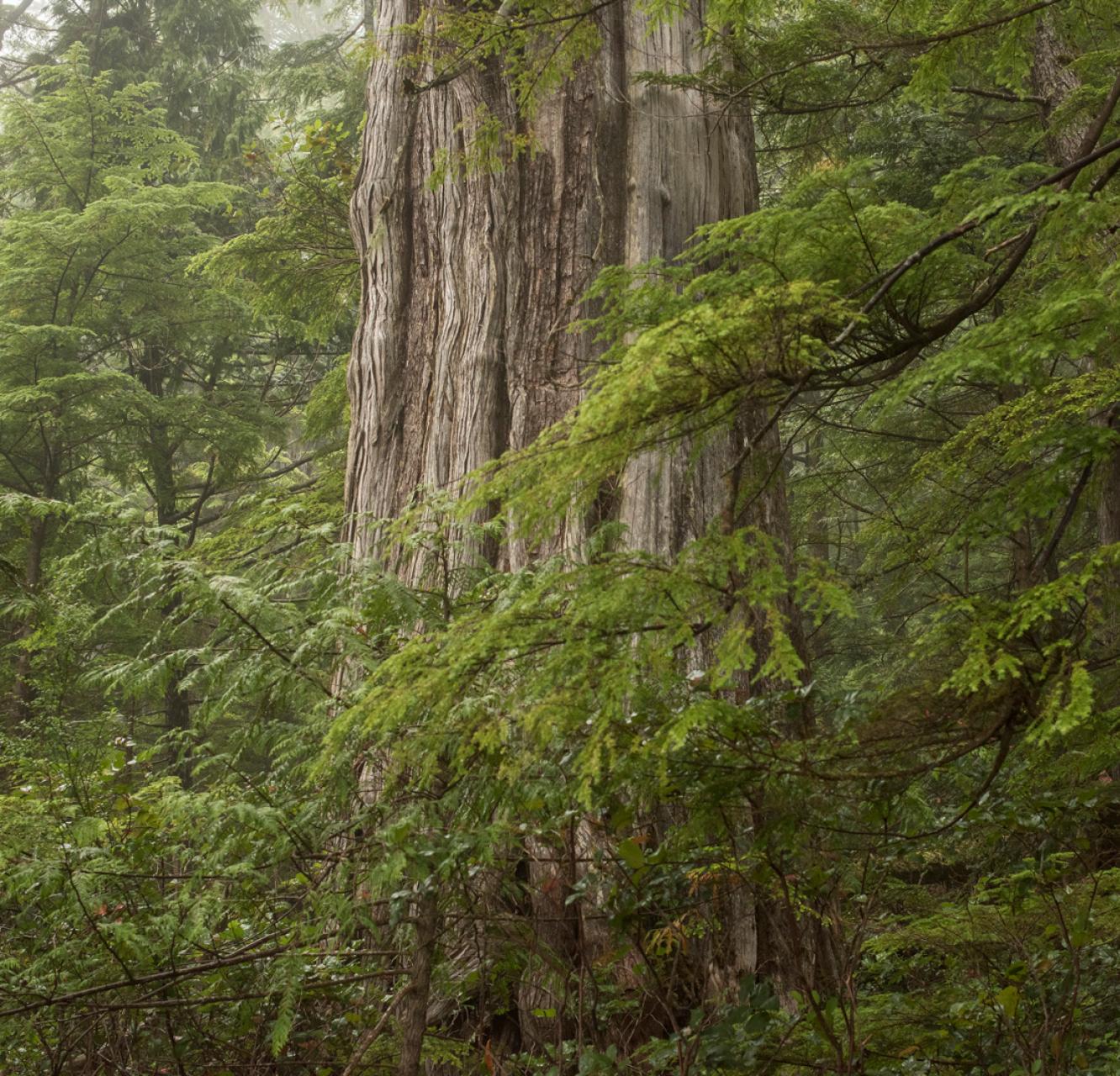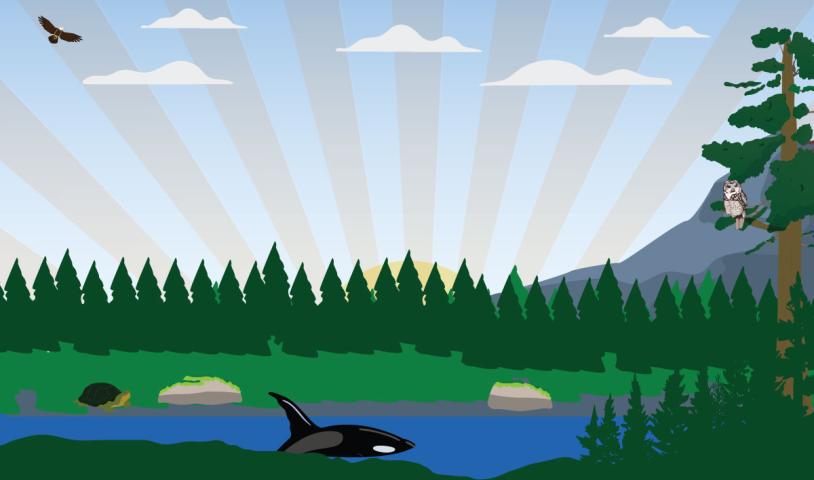A Forest in Chains ‑ Shared Vision
Tuesday, April 14, 1998
April 15th, 1998
By Joe Foy
This past Christmas morning I drove with my wife and kids from our home in New Westminster to my parents home in Surrey for Christmas breakfast.
While crossing the Port Mann Bridge I took a moment to drink in the spectacular view of the Fraser River. Below us huge log booms, each one made up of hundreds of oldgrowth timbers, bucked in the current. The snow-covered rafts were held together with heavy iron chains and steel cables tethered to pilings. They lined the river banks as far as the eye could see.
Me and those log booms go back to my earliest memories. I can remember hopping from log to log as a kid, terrified of falling to certain death in the river’s dark current - but mesmerized by the thought of salmon and sturgeon bigger than me lurking in the never-seen under water world.
But on Christmas morning all I could think about was how many wild valleys had been roaded, clearcut and ruined to make those booms. How many salmon runs snuffed out. How many species pushed to the brink of extinction. The sheer size of the numbers boggled my mind.
According to B.C. government reports, in the past 10 years over 700 million cubic meters of wood has been stripped from our forests. That’s enough timber to fill 20 million logging trucks. Put bumper to bumper that many trucks would circle the globe ten times! To fill those millions of logging trucks 20,000 square kilometers of wild forest were clearcut, then trucked, barged and towed here, to the Fraser River, to be chained up, awaiting their turn to be run through one of the many lumber and shake mills that line the lower river.
Urged on by timber companies lusting for bigger and bigger profits and by politicians eager to look good for the next election, successive B.C. governments have systematically
granted the right to log at rates far too high, in effect turning their back on the public’s trust in them to manage on a sustainable basis. You can see the results of this gross mismanagement all along the lower Fraser River. With most of the high-quality, easy-to-get-at forests logged off, B.C. lumber mills now rely on lower-quality far-away forests for logs. This wood is more expensive to access so when lumber prices are depressed, as they are now, the mills can’t sell the lumber at a profit. Many mills have shut down putting thousands out of work - all because of past over-logging.
Now the finger pointing has started. The timber barons blame the government and the government blames the markets, but until we deal with the root cause of our pain -- over-logging -- our troubles will continue to worsen.
Its not just mill workers that hurt because of over-logging. We all do. Decades of over-logging has pushed loggers into valleys where they never should have been allowed, like Vancouver’s water supply areas for example. Now the GVRD is considering a water filtration system designed to remove mud and silt deposited by logging-caused landslides and erosion. The estimated cost? One billion dollars -- every penny to be paid by local tax payers.
Not all of the costs of over-logging can be measured in dollars and cents either. Over 140 salmon runs have been wiped out, with overlogging being one of the biggest culprits.
B.C.’s Coho salmon, Woodland caribou, marbled murrelet, white-headed woodpecker, grizzly bear, spotted owl, pacific giant salamander and Queen Charlotte goshawk have all greatly
declined in numbers because of over-logging. In fact, according to the provincial Ministry of Environment, one in ten B.C. animal and plant species are now threatened or endangered, while another 451 species are classified as vulnerable.
The single biggest environmental threat facing British Columbia at the end of the 20th century is over-logging. Our common future absolutely depends on getting the over-cut down before the over-cut brings us down.






